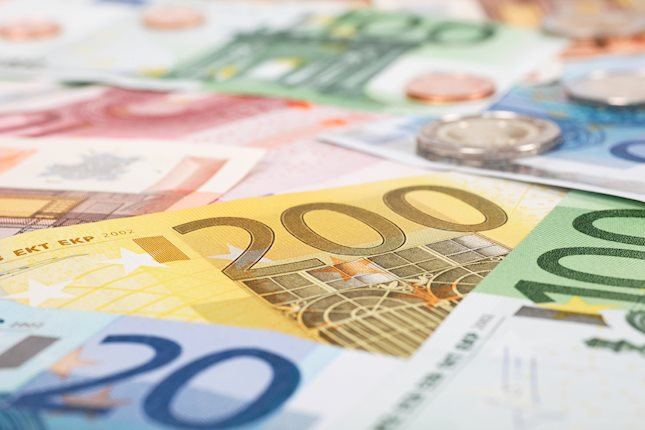- Natural Gas rallies in Europe over 10%, while US gas prices negative.
- The US Dollar takes it on the chin as the Chinese Yuan appreciates firmly against the Greenback.
- US Natural gas prices might see spillover from European gas futures and rally higher.
Natural Gas prices are taking off in Europe after workers in Australia have started their partial strikes on Friday. The volatility is peaking on the European gas market with European gas futures up over 10% at one point in European trading hours. Prices are set to rally further as from Thursday a full walkout could take place if no accord is being formed.
Meanwhile the US Dollar is tanking in a blood red trading day this Monday. The Greenback is losing big time against the Yuan, Yen and Australian Dollar, each time down near 1%. This makes the DXY slide substantially lower.
At the time of writing, Natural Gas is trading at $2.80per MMBtu.
Natural Gas news and market movers
- The Appalachia bassin production for local US natural gas deliveries, is expected to fall near 2.5% in production. All terminals across the US are reporting a decrease in exports as well for LNG this week.
- A big divergence in gas prices from a geographic point of view has emerged with European gas futures rallying nearly 10% to $93.29. It is a fresh monthly high for the month of September.
- Meanwhile, US gas futures were unfazed by the sudden spike in prices on the other side of the Atlantic Ocean. Though traders might see some catch up later this Monday once the US markets opens.
- On Friday, the Baker Hughes Rig Count printed a steady number, residing near an 18-month low. US gas prices might spiral higher as well if the US gas production starts to fall short of demand.
- Several weather projections are pointing to a harsh winter to come for both the US and Europe.
- Norwegian gas supply outages are yet again extended with the biggest one, the Troll gas field, extended until September 14th.
- European gas storage is expected to survive the winter and end the season with 44% supply left. Currently, European storage is filled to 93% capacity.
Natural Gas Technical Analysis: Europe still exposed to Russia
Natural Gas prices in the US are starting to fall in a consolidation pattern where buyers and sellers are being pushed toward each other, ignoring supply risk out of Australia. Several technical elements such as the 200-day Simple Moving Average (SMA), the ascending trendline and the 55-day SMA are moving toward each other. Once both buyers and sellers have reached their consolidation point, a breakout is due. In this case, it could mean Natural Gas prices rally higher with the Australian strikes creating a shortage of supply.
On the upside, $2.83 needs to be taken out in order for this bounce to gain momentum. Once this rebound materialises, look for the the 200-day Simple Moving Average (SMA) near $2.93. In case price starts to break above there and head higher, $3 will be crucial with the high of September at stake.
On the downside, the trend channel has done a massive job underpinning the price action. The 55-day SMA near $2.72 already provided support ahead of any test on the lower end of the trend channel. In case the 55-day SMA breaks, look for support near $2.66.
XNG/USD (Daily Chart)
Natural Gas FAQs
What fundamental factors drive the price of Natural Gas?
Supply and demand dynamics are a key factor influencing Natural Gas prices, and are themselves influenced by global economic growth, industrial activity, population growth, production levels, and inventories. The weather impacts Natural Gas prices because more Gas is used during cold winters and hot summers for heating and cooling. Competition from other energy sources impacts prices as consumers may switch to cheaper sources. Geopolitical events are factors as exemplified by the war in Ukraine. Government policies relating to extraction, transportation, and environmental issues also impact prices.
What are the main macroeconomic releases that impact on Natural Gas Prices?
The main economic release influencing Natural Gas prices is the weekly inventory bulletin from the Energy Information Administration (EIA), a US government agency that produces US gas market data. The EIA Gas bulletin usually comes out on Thursday at 14:30 GMT, a day after the EIA publishes its weekly Oil bulletin. Economic data from large consumers of Natural Gas can impact supply and demand, the largest of which include China, Germany and Japan. Natural Gas is primarily priced and traded in US Dollars, thus economic releases impacting the US Dollar are also factors.
How does the US Dollar influence Natural Gas prices?
The US Dollar is the world’s reserve currency and most commodities, including Natural Gas are priced and traded on international markets in US Dollars. As such, the value of the US Dollar is a factor in the price of Natural Gas, because if the Dollar strengthens it means less Dollars are required to buy the same volume of Gas (the price falls), and vice versa if USD strengthens.
Information on these pages contains forward-looking statements that involve risks and uncertainties. Markets and instruments profiled on this page are for informational purposes only and should not in any way come across as a recommendation to buy or sell in these assets. You should do your own thorough research before making any investment decisions. FXStreet does not in any way guarantee that this information is free from mistakes, errors, or material misstatements. It also does not guarantee that this information is of a timely nature. Investing in Open Markets involves a great deal of risk, including the loss of all or a portion of your investment, as well as emotional distress. All risks, losses and costs associated with investing, including total loss of principal, are your responsibility. The views and opinions expressed in this article are those of the authors and do not necessarily reflect the official policy or position of FXStreet nor its advertisers. The author will not be held responsible for information that is found at the end of links posted on this page.
If not otherwise explicitly mentioned in the body of the article, at the time of writing, the author has no position in any stock mentioned in this article and no business relationship with any company mentioned. The author has not received compensation for writing this article, other than from FXStreet.
FXStreet and the author do not provide personalized recommendations. The author makes no representations as to the accuracy, completeness, or suitability of this information. FXStreet and the author will not be liable for any errors, omissions or any losses, injuries or damages arising from this information and its display or use. Errors and omissions excepted.
The author and FXStreet are not registered investment advisors and nothing in this article is intended to be investment advice.
Recommended content
Editors’ Picks

EUR/USD holds near 1.0550 after Eurozone inflation data
EUR/USD trades marginally higher on the day at around 1.0550 in the European session. The data from the Eurozone showed that the annual HICP inflation rose to 2.3% in November from 2% in October, as expected. Financial markets in the US will close early on Friday.

GBP/USD loses traction, retreats below 1.2700
After climbing to its highest level in over two weeks at 1.2750, GBP/USD reverses direction and declines to the 1.2700 area on Friday. In the absence of fundamental drivers, investors refrain from taking large positions. Nevertheless, the pair looks to snap an eight-week losing streak.

Gold price eases off weekly highs, remains above $2,650
Gold eases from weekly highs but holds moderate gains above $2,650 on Friday. XAU/USD builds on this week's goodish rebound from the $2,600 neighborhood. US President-elect Trump's tariff plans, Russia-Ukraine geopolitical risks and dovish Fed bets power the bright metal.

Bitcoin attempts for the $100K mark
Bitcoin (BTC) price extends its recovery and nears the $100K mark on Friday after facing a healthy correction this week. Ethereum (ETH) and Ripple (XRP) closed above their key resistance levels, indicating a rally in the upcoming days.

Eurozone PMI sounds the alarm about growth once more
The composite PMI dropped from 50 to 48.1, once more stressing growth concerns for the eurozone. Hard data has actually come in better than expected recently – so ahead of the December meeting, the ECB has to figure out whether this is the PMI crying wolf or whether it should take this signal seriously. We think it’s the latter.

Best Forex Brokers with Low Spreads
VERIFIED Low spreads are crucial for reducing trading costs. Explore top Forex brokers offering competitive spreads and high leverage. Compare options for EUR/USD, GBP/USD, USD/JPY, and Gold.
-638300236458140745.png)